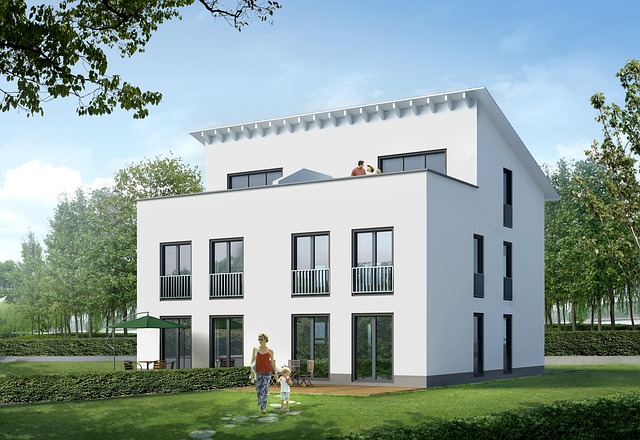CAD-based structural modeling revolutionizes architectural and engineering practices by creating precise digital representations of buildings. Using 3D models, professionals simulate various lighting conditions, from daylight to artificial lighting, for structural analysis and aesthetic design. These simulations optimize space orientation, enhance visual comfort, reduce energy consumption, improve safety, and ensure building longevity through proactive identification of design weaknesses.
“Illuminating structures for evaluation is a growing area of interest in architectural design. This article explores the power of day and night lighting simulations as essential tools for assessing building integrity. We delve into the process of CAD-based structural modeling, its role in creating realistic digital twins, and how dynamic lighting environments can reveal unseen structural dynamics. From enhancing safety and aesthetics to optimizing spatial experiences, this analysis offers a game-changing approach using advanced simulation techniques.”
CAD-based Structural Modeling: Laying the Foundation
Computer-aided design (CAD) has revolutionized architectural and engineering practices, including structural analysis. CAD-based structural modeling serves as a foundational step in evaluating buildings and structures, enabling engineers to create precise digital representations. This process involves generating 3D models that mimic the physical attributes of a structure, incorporating details such as dimensions, materials, and geometric configurations.
By utilizing CAD software, professionals can develop comprehensive models that facilitate various simulations. These simulations, ranging from static analysis to dynamic lighting studies, provide valuable insights into structural performance under different conditions. Lighting simulations, in particular, play a crucial role in understanding how a structure interacts with its environment, especially when contrasting day and night scenarios. This approach ensures that designs meet safety standards and aesthetic expectations.
Simulating Day Lighting: Visualizing Space and Form
Simulating day lighting in architectural design is a powerful tool for visualizing spaces and forms, especially through advanced CAD-based structural modeling techniques. By replicating natural light conditions, designers and engineers can assess how structures interact with their environment throughout the day. This process involves creating digital twins of buildings, incorporating detailed geometric models and material properties to accurately predict light patterns and shadows. With these simulations, it becomes possible to identify optimal orientation for spaces, enhance visual comfort, and maximize natural illumination without relying solely on artificial lighting.
Moreover, day lighting simulations contribute to energy efficiency assessments by indicating the potential for passive solar heating and cooling strategies. By understanding how sunlight interacts with a structure’s design, professionals can make informed decisions about window placement, overhangs, and other architectural elements that regulate interior temperatures. This holistic approach to structural evaluation ensures not only aesthetically pleasing designs but also sustainable and energy-conscious buildings.
Night Lighting's Impact: Enhanced Safety and Aesthetics
Night lighting plays a pivotal role in enhancing both safety and aesthetics, particularly for complex structures such as skyscrapers and bridges. In urban settings, well-designed nighttime illumination can significantly improve visibility, making it easier for pedestrians and drivers to navigate through dimly lit areas. This is especially crucial during emergency situations, where clear lines of sight are vital for efficient response and rescue operations.
Moreover, strategic night lighting can elevate the visual appeal of architectural marvels. Through CAD-based structural modeling, engineers and designers can create simulations that replicate various lighting scenarios, ensuring that structures not only stand sturdy under different conditions but also captivate onlookers with captivating visual displays after dark. This dual aspect of enhanced functionality and aesthetic allure underscores the importance of meticulous planning and implementation in day and night lighting simulations for structural evaluation.
Evaluating Structural Integrity Through Illumination Analysis
Evaluating a structure’s integrity and performance under varying light conditions is an essential aspect of modern architectural design and engineering. Illumination analysis, often integrated into CAD-based structural modeling, plays a pivotal role in understanding how daylight and artificial lighting impact a building’s structural components over time. By simulating day and night patterns, engineers can predict the thermal effects, stress concentrations, and overall durability of materials, ensuring the safety and longevity of the structure.
This process involves complex calculations that take into account factors such as light intensity, reflection, diffusion, and shading. Through detailed simulations, architects and engineers can identify potential weak points in a design, allowing for informed adjustments to improve structural integrity. This proactive approach leverages technology to create buildings that not only meet current safety standards but also withstand the dynamic interplay of light and materials over their entire lifespan.
In conclusion, combining CAD-based structural modeling with advanced day and night lighting simulations offers a comprehensive approach to evaluating building integrity. By visualizing space and form under different illumination conditions, architects and engineers can optimize design for both safety and aesthetics. This integrated process ensures that structures not only withstand physical stresses but also create visually appealing environments, enhancing the overall user experience.
